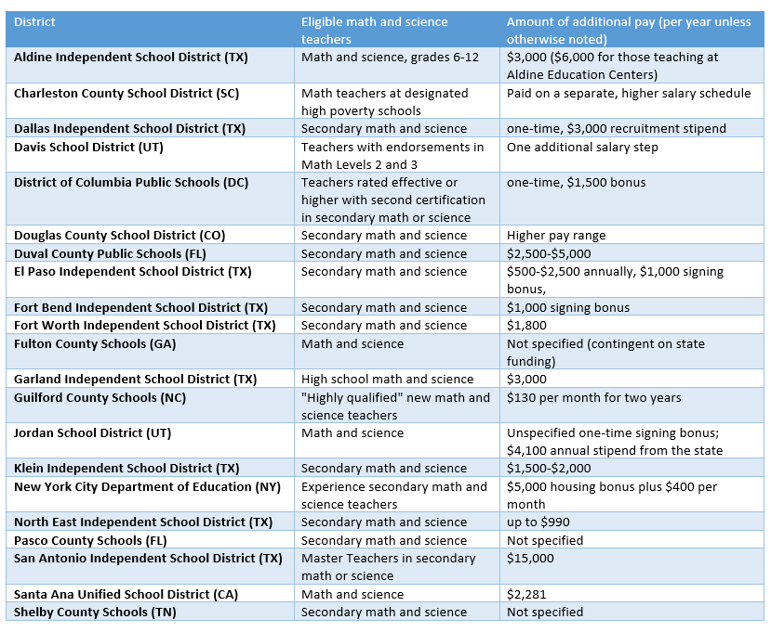The Secret Sauce When Recruiting and Retaining STEM Teachers? Strategic Pay.
By Kate Walsh
For many districts, recruiting and retaining quality STEM teachers feels like an uphill battle with insufficient solutions. Yet for all the many conversations focused on addressing STEM teacher shortages, few acknowledge the surest way to whet the appetite of qualified candidates: strategic pay.
While there are a number of essential ingredients for solving this problem, districts can’t ignore the big reason why their competitors also going after STEM-skilled workers keep winning: high private sector salaries. If districts want to compete, they too must be willing to deploy strategic pay as an essential tactic.
Districts who are getting this right are designating STEM subjects as high-need subjects and aligning meaningful compensation accordingly. This differentiated compensation structure can come in many forms.
Some districts make these teaching placements more enticing by placing new STEM teachers on a higher rung on the salary ladder. For example, Davis School District (UT) places new math teachers a step higher on the salary schedule than their experience would otherwise warrant. Boston Public Schools (MA) allows newly hired teachers in shortage subject areas to be placed on any step of the salary grid and may also cover moving expenses or other up-front, non-recurring payments as a hiring incentive. Other strategic compensation options include: one-time signing bonuses, annual stipends, and even housing stipends depending on the specifics of the district.

This chart represents some examples of districts using differentiated pay to specifically recruit math and science teachers.
Offering competitive pay also opens the door to recruiting career changers. Not every STEM major will go straight into the classroom, but there are ways to lead them there if compensation is comparable with the market. For example, Long Beach Unified School District (CA) adjusts salary by one step for every two years of relevant professional work experience, up to four steps. Miami-Dade County Public Schools (FL) adjusts salary one percent above starting teacher salary for two years of experience, up to 10 percent.
The recipe for the secret sauce for building a strong teaching corps is quite simple: if you want to recruit and retain quality STEM teachers, you need to pay for them.
ABOUT THE AUTHOR

Kate Walsh
Kate Walsh has served as the president of the National Council on Teacher Quality since 2003, leading work to ensure that every child has equal access to effective teachers. At NCTQ, Walsh has spearheaded efforts to instill greater transparency and higher standards among those institutions that exert influence and authority over teachers. Notably, she launched the first-ever review and rankings of the nation's teacher preparation programs. Previously, Walsh worked at The Abell Foundation in Baltimore, the Baltimore City Public Schools, and the Core Knowledge Foundation. Among her accomplishments, she: started and ran a boarding school located in Kenya, East Africa, in order to educate at-risk boys from Baltimore; founded one of the nation's premier STEM programs, yielding numerous Intel Talent Search winners for Baltimore City; and, started the first alternative certification program for teachers in Maryland. A long-time resident of Baltimore, Walsh has also served on the Maryland State School Board.
